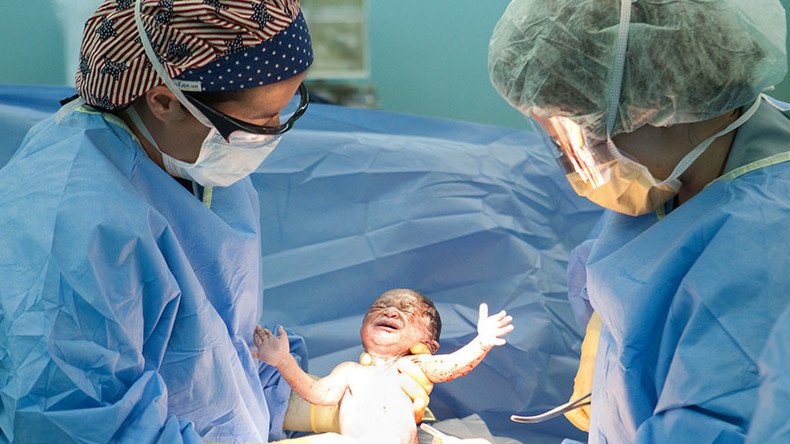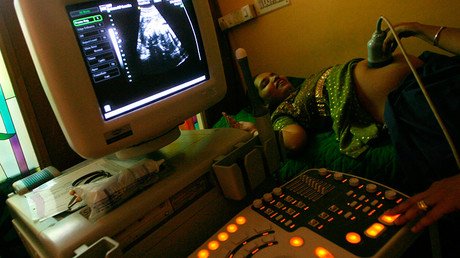C-section babies more likely to be obese as adults – study

Lack of exposure to vital bacteria in the birth canal for babies born by caesarean section may result in additional weight, leading to obesity in adulthood, a new study says.
The study, published in the journal JAMA Pediatrics, examined 22,068 children born to 15,271 women. The children were then sent follow-up questionnaires over a 20-year period.
The participants' responses showed that those born by C-section were 0.3 Body Mass Index (BMI) points heavier on average, compared to those born by vaginal birth.
Overall, babies born by C-section were 15 percent more likely to be obese in adulthood.
The researchers found that the link is not explained by having overweight mothers, or the fact that women with pregnancy complications – such as high blood pressure – are more likely to deliver by C-section.
When children within a single family were compared, those born by C-section were a whopping 64 percent more likely to be obese than their siblings born by vaginal delivery.
“With siblings, they have the same mother and home environment so the genetics, the feeding environment, are all controlled for,” said Audrey Gaskins, an epidemiologist at Harvard University and co-author of the study, as quoted by the Guardian.
The researchers believe the answer could be down to bacteria in the birth canal which C-section babies are not exposed to during birth. According to the authors of the study, this bacteria colonizes the baby's gut and may change the body's metabolism.
“Children born by vaginal delivery are primarily exposed to their mothers' vaginal and gut microbes, whereas children born by caesarean are primarily exposed to bacteria on their mothers' skin and whatever bacteria happen to be in the air in the operating room,” Gaskins told ResearchGate.
“This initial difference in mode of delivery leads to changes in the type of bacteria living in children’s guts. Moreover, the pattern of gut bacteria that children born by C-section tend to have has been previously linked to greater risk of obesity later in life,” she continued.
However, the researchers stopped short of stating that C-sections cause the higher risk of obesity, as participants' gut bacteria was not measured or compared, and other factors could be involved – such as the fact that caesarean babies are less likely to be breastfed, which also influences gut bacteria and protects against obesity.
Gaskins said she and her colleagues hope to do a follow-up on the hypothesis that gut bacteria differences are behind the increased risk of obesity for those born by C-section.













